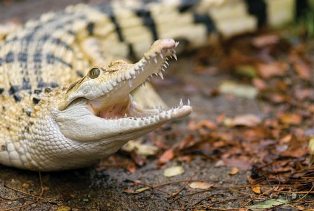Welcome Kabayan!
Feel free to browse around for photos, stories and information all about Naujan.
Kanlungan sa Naujan
Categories
-
Recent Posts
Recent Comments
- Vener EStorque Albufera on Naujan Academy
- Fr Matthew Gibson on San Nicolas de Tolentino, Patron Saint of Naujan
- rhealyngerpacio on The 70 Barangays of Naujan
- Arvin Parin on Inarawan National High School (INHS)
- Aiko Passion Mendoza on Municipal Government Offices
-
Like Us on FB
DISCLAIMER
Naujan.com, unless otherwise noted, do not own the pictures posted in this site. Credits are due to our fellow Naujeños who continue to share their stories, information, and photos to our kababayans everywhere.
-
Background photos by Marlon T. Abuan, Raymund Valenton, JL Reyes, Mon Robles, Norman Belino, Jay Feudo Hernandez and Dr. RM Del Mundo.

Mar
16
2012
 1
1Photo courtesy of the Pittsburgh Zoo
The Mindoro Crocodile (Crocodylus mindorensis) more popularly known as the Philippine Crocodile.
It is a relatively small freshwater crocodile endemic to the Philippines. Growing no more than three meters, they have a relatively broad snout and thick bony plates on its back (heavy dorsal armor). Females are slightly smaller than males. Philippine crocodiles are golden-brown in color, which darkens as it matures.
It is only found on the islands of the Philippines. This species of crocodile is one of the most severely threatened species around. There are probably less than 100 non-hatchling Philippine crocodiles surviving in the wild.
The Philippine crocodile is a relatively small, freshwater crocodile. Until very recently it was considered a subspecies of the New Guinea crocodile (Crocodylus novaeguinae).
It was historically found in Luzon and parts of Visayas and Mindanao until the numbers were drastically cut by, mainly, habitat destruction.
Conservation Efforts
Although this species was once found over the whole of the Philippines, it is now critically endangered.
Initial population reduction was through commercial exploitation, although the current threat is mainly from removal of suitable habitat for agricultural purposes to satisfy a rapidly expanding human population. There is also very limited governmental support for any conservation measures, and the crocodiles are often killed by the local populace.
Conservation methods are being taken by the Mabuwaya foundation, the Crocodile Conservation Society and the Zoological Institute of HerpaWorld in Mindoro.
Comment for The Mindoro Crocodile
genova apostol
November 24, 2016, 1:01 am
November 24, 2016, 1:01 am
What are the steps on how you conserve the crocodile in naujan and who are the encharge in managing the conservation?



